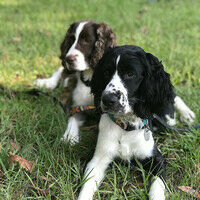As many of the lurkers here know - I try to involve myself here with artistic creation topics and less on the arranging end (like the tools and samples) and the business or human impact end (though I occasionally delve into those areas as well).
Over the years I have been involved in learning (I started music classes at a 2 year community college in 2003 and I still take Jazz improvisation classes now going on my 19th year), my teacher and mentor has consistently emphasized (among other things) when I write the music to stay away from my primary instrument (the piano in my case) and to create 'implied rhythms'. I don't always listen but I incorporate that when possible -- though now I may be relying too much on one or two guitars instead of a piano... :)
Here is the concept behind the rhythm request. In very basic terms, the four main components of the music I create are the notes/melody, the note/chord, the dynamics/intensity, and the tempo/rhythm (some could add the 'articulation' of the notes as a fifth).
Today I want to briefly mention the tempo/rhythm. When we as listeners hear a music creation at a particular tempo, how do we know / hear how fast or slow it is? There are two basic ways:
(1) a 'tendency' among music creators to supply the listener with the 'beat'. So for example, in a 4/4 tempo, something which you can hear is playing every beat - say a regular playing 1/4 or 1/8th note. The listener gets 'aided' with hearing the beat. The beat can be supplied by a single note, a chord or a combination of instruments. For example, the famous strings in the shower scene or the opening shark attack in Jaws are all about creating the emotion through not only the notes and chords but providing an actual rhythm/beat for the listener.
(2) the second way of hearing a rhythm is for it to be 'implied'. The creator provides say the melody and chords but not a specific rhythm. The rhythm is created in the heads of the listeners. Sometimes, say in a live performance, as you listen, you may feel the tempo/beat or may not. You could feel it but also lose it (if you understand where I am going with this). Ever wonder what the beat was until you followed the arms of the conductor holding the ensemble to a tempo and/or beat? Creating an 'effective' implied rhythm/beat is not just for lush legatos. One could suggest that 'folding' the rhythm into the melodic and chordal structure of a piece (such is what you hear in music supporting fights, chase scenes, and other faster tempo music) can be implied since you are not dedicating unpitched percussion or a pitched instrument to soley highlighting the beat/rhythm.
So in my mind, clearly creating rhythm with #2 is more 'advanced' and often music creators get concerned the listeners will not 'get' the beat unless it is specifically supplied to their ears. But as we move along in our music careers, we begin to give more credit to our listeners and we become more willing to leave out the guiding beats and let our music imply the beats.
So how do you create your rhythms?



I wish I could say LOL I will say that I really like finding sounds. I've been known to pick up an instrument and just turn it upside down and inside out to find all the different sounds it can make, and in that exploration take something I like and riff off of it. Speaking of which... I may be getting an African Thumb Piano this weekend! SQUEE! :-D
1 person likes this
It's an interesting subject, Joel. Personally I work a lot with semi improvised ideas and pieces without a strict time signature, which allows a degree of freedom when creating rhythms. It allows the rhythm to be dictated by the visuals (though it can create syncing complications down the line!) I think you're right in saying we should trust our audience to find the rhythm without necessarily spelling it out for them, their ears are far more astute than we give them credit for.<br><br> Kay, I love doing that with instruments! I wrote a horror score last year that was literally my me making the most crazy noises possible with my violin and voice. So much fun to play with sounds. And thumb pianos are the best, we'll have to compare notes at some point!
1 person likes this
I sometimes take on a different approach in that I use instruments/rhythm patters that come from my cultural background (I live in Trinidad and Tobago) and incorporate them into a scene. By the way, our indigenous musical rhythms are very diverse. Of course it has to be dependent on what the scene is. As an example, I will now post two videos. Video 1 is one of the premiere rhythm (sometimes spelt 'riddem') groups here - the Laventille Rhythm Section. The second video is a rescore I did that incorporated that aspect of my cultural heritage.
1. Laventille Rhythm Section: https://www.youtube.com/watch?v=Z21tgAAkje82. Tears of Steel Rescore: https://www.youtube.com/watch?v=QOo4N8QWGcI
Totally depends on the project - time, budget, and thickness of the arrangement. Many a time I simply layer a few sounds and play live with the click off - to quickly get a cue finished. (And sometimes those cues are most effective). Other times I have all sorts of ostinatos rolling along to create movement and to clearly set tempo in the listeners mind and then frost with whatever - usually legato strings/horns for melodies - in those cases the click is driving everything as a reference for me to stay with - and then when time allows or the scene requires it's all about tempo mapping before writing. So downbeats and hits end up where they should visually speaking and musical phrasing wise.